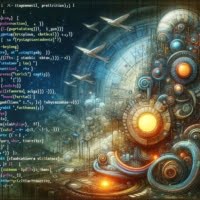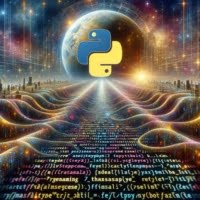Python
21 Aug 2023
Python Array Usage Guide with Examples

Arrays are a cornerstone of Python programming, playing a pivotal role in data management, analysis, and machine learning. Whether you’re a Python novice or a seasoned coder seeking to dust off your skills, mastering arrays is a non-negotiable. Our mission in this comprehensive guide is to help you conquer the use of arrays in Python.
21 Aug 2023
Python Substring Quick Reference

Has Python’s string manipulation ever left you feeling like you’re navigating a maze? Have you wished for an easier way to extract specific character sequences? If so, you’re in the right place. This blog post will demystify Python’s string manipulation, focusing particularly on substring extraction. Whether you’re a Python novice or a seasoned coder looking
20 Aug 2023
Python IDLE Installation and Usage Guide
Are you ready to dive into the world of Python programming? If so, Python’s Integrated Development and Learning Environment (IDLE) is your Swiss Army knife. This comprehensive guide will take you on a journey through Python IDLE, an essential tool in Python programming. Whether you’re a beginner just starting out or an experienced coder looking
20 Aug 2023
Python Counter Quick Reference Guide

Navigating the world of Python programming can often feel like a daunting task, particularly when dealing with large datasets and complex data structures. But what if there was a way to simplify these tasks? Meet Python’s Counter class – a hidden gem in Python’s collections module. It’s a powerful tool that can help you manage
20 Aug 2023
Python Syntax Cheat Sheet
Whether you’re a seasoned developer looking to brush up on Python’s intricacies or a beginner stepping into the world of programming, this Python Cheat Sheet is your handy companion. Within this guide, you’ll find concise explanations, practical examples, and quick references for Python’s core concepts and functionalities. This cheat sheet is designed to be both
15 Aug 2023
Python Curl Guide | How To Connect To Websites and APIs
Today we’re combining Python, a programming language adored by many, with the robustness of cURL, a command-line tool used for transferring data with URLs. This dynamic duo empowers you to perform advanced web tasks such as GET and POST requests, handling HTTP headers, and even web scraping, all with relative ease. In this comprehensive guide,
14 Aug 2023
Python Increment By 1 | Quick and Easy Examples

Have you ever been puzzled about why Python, unlike languages such as C++ or JavaScript, doesn’t include increment and decrement operators? You’re not alone. This seemingly simple feature, found in many other languages, is noticeably missing in Python. But don’t worry — you can work around this. In this blog post, we’re going to explore
14 Aug 2023
Python Set difference() | Usage Guide with Examples

The Python set difference function, often overlooked, can significantly boost your data handling abilities. However, like any potent tool, it comes with its complexities and common pitfalls. In this guide, we’ll delve into the Python set difference function, exploring its usage, syntax, and common errors. By the end of this read, you’ll have a thorough
14 Aug 2023
Python Merge Dictionaries | 5 Easy Methods with Examples

The flexibility of Python dictionaries is unparalleled, serving various purposes from data storage to complex code organization. But what if you need to merge multiple dictionaries? That’s when the magic of merging dictionaries in Python comes to the forefront. In this article, we will delve into the diverse techniques Python offers to merge dictionaries, their
14 Aug 2023
Python Rename File: 7 Easy Methods with Examples

File renaming is a frequent task in system management, and it can often be quite tedious. But what if there was a tool to make this task less daunting? This is where Python comes in. Python is a robust and versatile programming language that can significantly streamline the process of file renaming. In this comprehensive